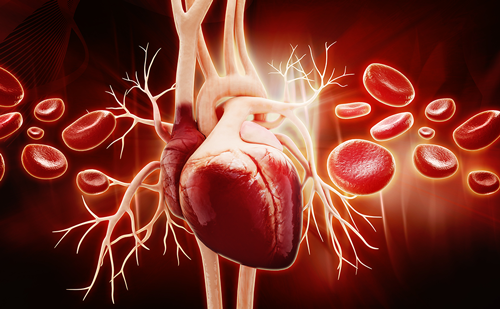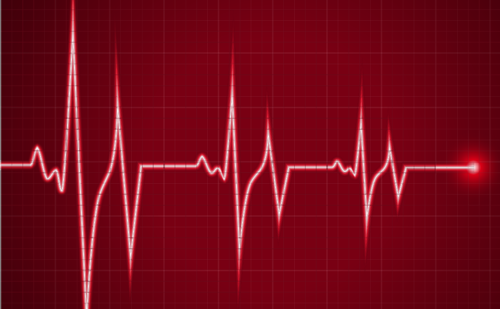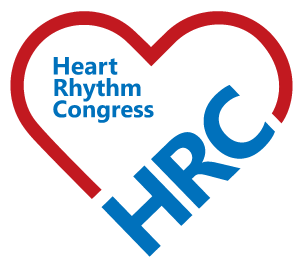Electrical isolation of the pulmonary veins is the generally accepted (“cornerstone”) approach to treat symptomatic atrial fibrillation (AF) by catheter ablation.1,2 Pulmonary-vein isolation (PVI) can be achieved either by circumferential heating (“fire”) or freezing (“ice”) of the left atrial tissue surrounding the pulmonary veins. The former methodology involves the sequential, “point-bypoint” application of focal radiofrequency-current (RF) lesions utilising irrigated electrode catheters and electroanatomical guidance (RF ablation), whereas the latter comprises the “single-shot” application of coolant to a special “cryoballoon” catheter placed via fluoroscopic guidance at the pulmonary-vein antra (cryoballoon ablation).
With RF ablation – the initially available technology – widely considered the “gold standard” for PVI, but cryoballoon ablation presumably easier to perform, the randomised, multicentre FIRE AND ICE trial set out to demonstrate, in patients with paroxysmal AF, the non-inferiority of cryoballoon ablation with respect to the time to a first documented clinical failure within 1 year outside a 90-day “blanking period” after the index ablation.3Events (i.e., clinical failures) assessed in this primary efficacy endpoint of the trial included the recurrence of AF (lasting for more than 30 seconds), atrial flutter or atrial tachycardia, the prescription of class I or III antiarrhythmic agents and repeat ablation. The investigators assumed a clinical-failure rate of 30% associated with RF ablation and accepted for non-inferiority of cryoballoon ablation a maximum absolute difference of 10%, corresponding to a hazard ratio not exceeding 1.43.4
The trial enrolled a total of 769 symptomatic patients with drug-refractory paroxysmal AF and is the largest AF ablation trial to date. Seven-hundred and fifty patients constituted the “modified intention-to-treat” cohort of randomised patients who were actually treated (376 by RF ablation, 374 by cryoballoon ablation). With 138 patients in the cryoballoon group and 143 patients in the RF group reaching the primary efficacy endpoint, 1-year event rates were 34.6% and 35.9% (Kaplan- Meier estimates), respectively. The corresponding hazard ratio was 0.96, with a 95% confidence interval ranging from 0.76 to 1.22; thus, the non-inferiority of cryoballoon versus RF ablation was confirmed (p<0.001).3
The primary safety endpoint of FIRE AND ICE – a composite of all-cause death, all-cause stroke/ transient ischaemic attack, arrhythmia-related and non-arrhythmia-related serious adverse events – was also found, at 1 year, not to be different between the study groups, with estimated event rates of 10.2% in the cryoballoon group and 12.8% in the RF group).3 Methodology-specific differences were observed for the duration of the ablation procedure, which was on average significantly shorter for cryoballoon ablation (124 versus 141 minutes for RF ablation, p<0.0001), and for fluoroscopy time, which on average was significantly longer for cryoballoon ablation (22 versus 17 minutes, p<0.0001).
Follow-up in the trial was scheduled at 3, 6, 9 and 12 months, and annually thereafter for up to 33 months, with a mean overall follow-up duration of 1.5 ± 0.8 years at the end of the trial. During that period, the FIRE AND ICE investigators also assessed patient-relevant secondary clinical endpoints such as the incidence of repeat ablations and direct-current (DC) cardioversions, as well as all-cause and cardiovascular rehospitalisations (both repeat ablations and DC cardioversions counted as specific cardiovascular rehospitalisations). Moreover, quality of life according to the Short Form Survey (SF)-12 and the EuroQol five-dimension questionnaires was assessed at baseline and every 6 months thereafter.4,5
With respect to rehospitalisation events, patients undergoing cryoballoon ablation fared significantly better than patients undergoing RF ablation. The former experienced fewer rehospitalisations for any cause (32.6% versus 41.5%, p=0.01) as well as for cardiovascular reasons (23.8% versus 35.9%, p<0.01) and had to undergo less often repeat ablation (11.8% versus 17.6%, p=0.03) or DC cardioversion procedures (3.2% versus 6.4%, p=0.04).5
Quality of life, both mental and physical, improved regardless of the ablation modality within the first 6 months of the index ablation. That improvement was maintained throughout the study out to the 30-month visit. The reduction in rehospitalisations in patients treated with the cryoballoon, mainly for cardiovascular reasons and repeat ablations, is an indirect indicator of a reduction of the AF burden during followup. This is not only of clinical importance for patients but also leads to significantly lower costs for health care payers in patients undergoing cryoballoon ablation.
In summary, the FIRE and ICE trial confirmed the non-inferiority, with respect to the primary endpoint of time to first documented clinical failure within 1 year, of the cryoballoon as opposed to the RF ablation modality in a rather healthy patient population with paroxysmal AF. The safety profile was similar between both technologies. More importantly, from a clinical point of view, the study revealed evidence of a significant reduction in the AF burden during follow-up in patients treated with the cryoballoon, as indicated by significantly less rehospitalisations for cardiovascular reasons and repeat ablations. This finding was associated with a significant cost reduction in the cryoballoon arm when compared with the RF arm. Therefore, patients with paroxysmal AF should primarily undergo PVI via catheter ablation with the cryoballoon rather than RF. The cryoballoon procedure is not only easier to learn and to perform, but it is also more effective during follow-up and associated with less costs.














